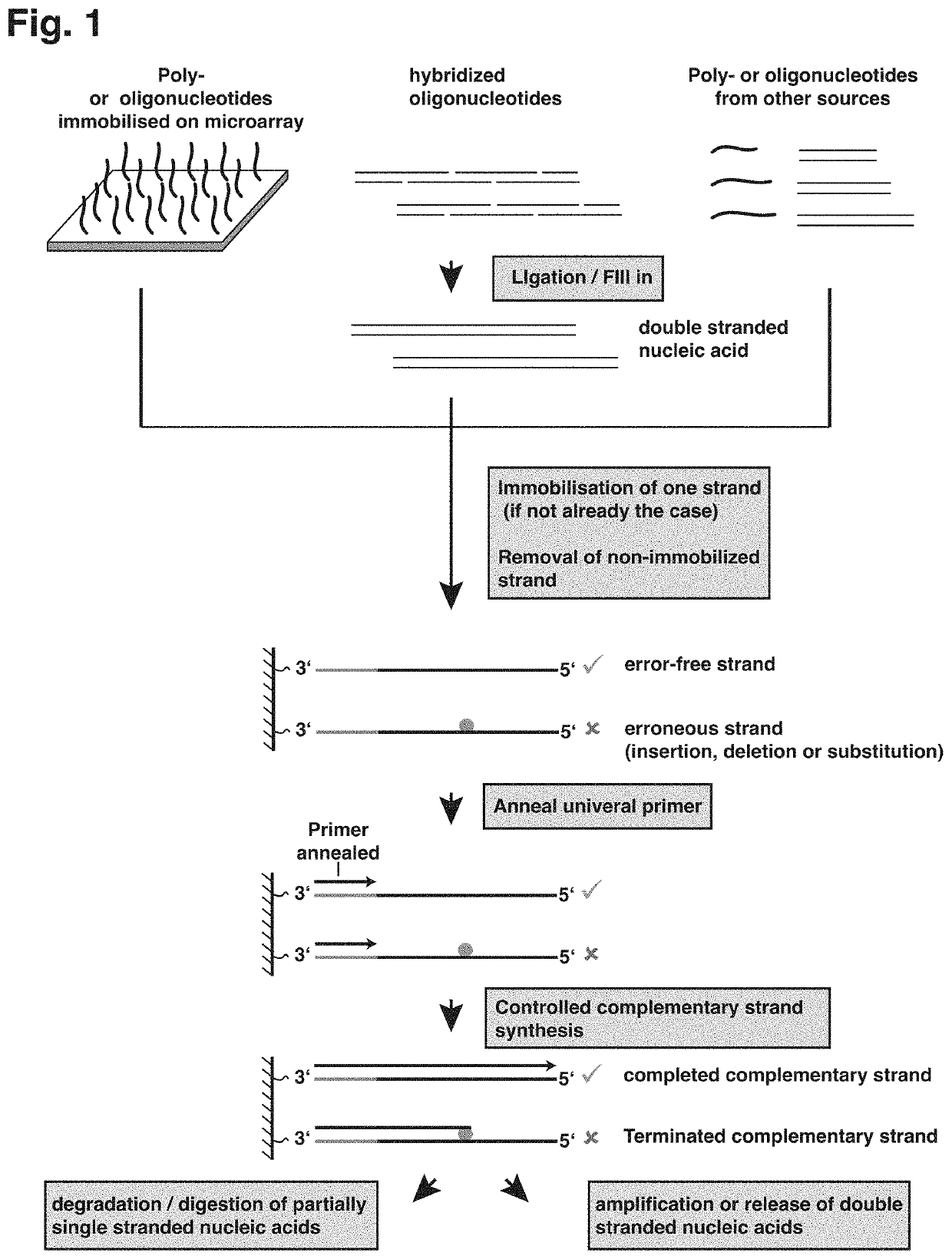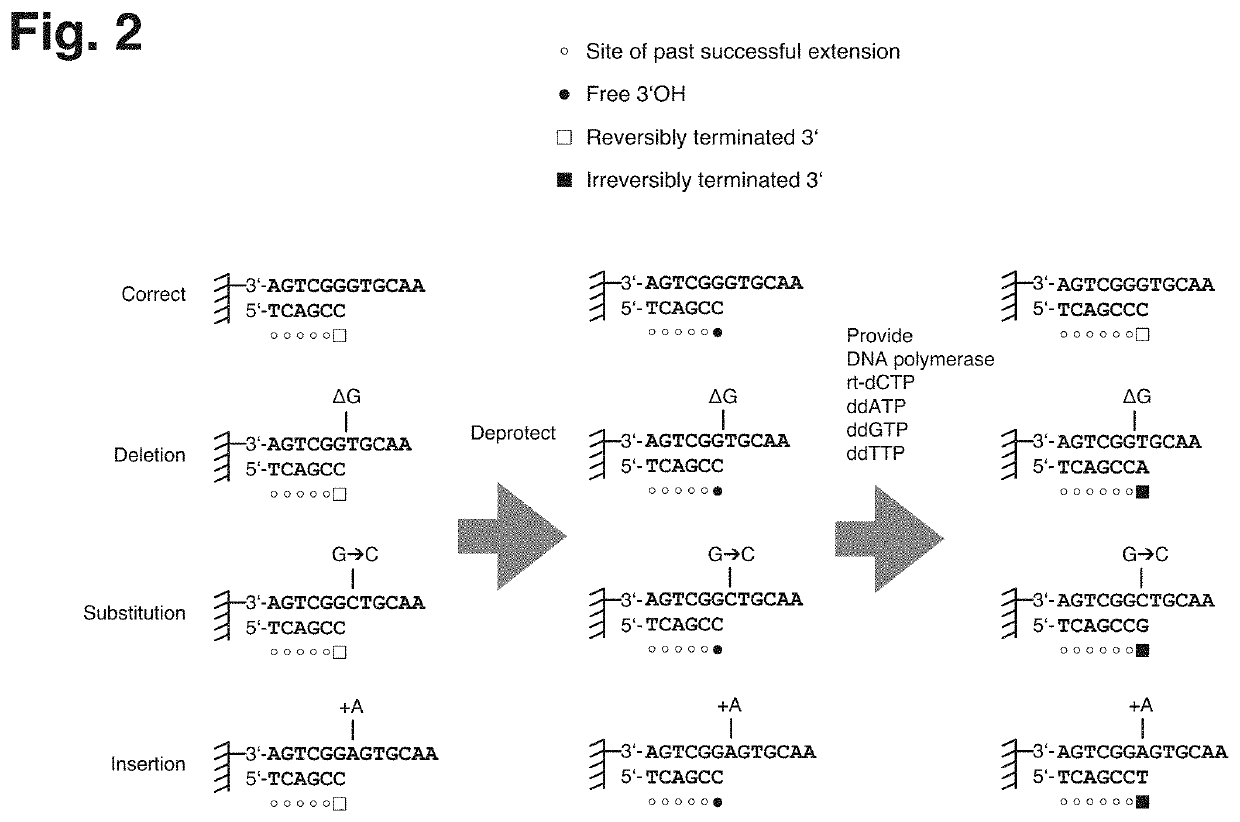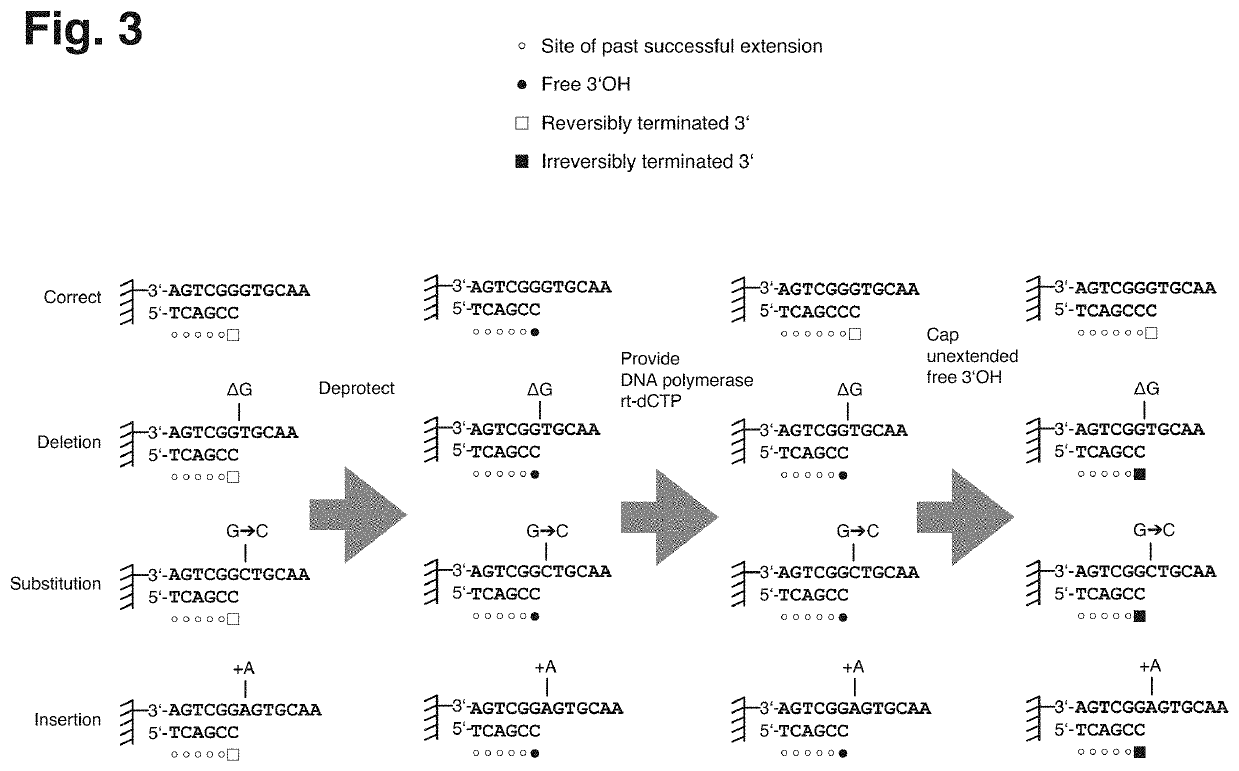Method for selection of correct nucleic acids
a nucleic acid and nucleic acid technology, applied in the field of nucleic acid selection methods, can solve the problems of increased chance of incorporating at least one error, deletion, insertion or substitution errors, and unsatisfactory biochemical discrimination
- Summary
- Abstract
- Description
- Claims
- Application Information
AI Technical Summary
Benefits of technology
Problems solved by technology
Method used
Image
Examples
Embodiment Construction
[0028]Nucleic acids of various sources may be subjected to the technique described herein and, despite using DNA as an example of a nucleic acid for the subsequent description, it will be appreciated that the technique could also be applied to other types of nucleic acid, such as XNA (xeno nucleic acid) or RNA.
[0029]The technique described herein provides a method of retrieving or enriching for error-free DNA from a mixture of erroneous and error-free DNA, which may be a product of de novo nucleic acid synthesis or other processes and which may contain any type of errors such as deletions (where one or multiple nucleotides are missing), insertions (where one or multiple additional nucleotides are inserted), substitutions (where one or multiple nucleobases are exchanged for other nucleobases) or chemical alterations of the structure of the nucleic acid.
[0030]The technique described herein addresses the demand for accurately synthesized DNA in various technological field, such as biot...
PUM
| Property | Measurement | Unit |
|---|---|---|
| fragment length | aaaaa | aaaaa |
| lengths | aaaaa | aaaaa |
| length | aaaaa | aaaaa |
Abstract
Description
Claims
Application Information
 Login to View More
Login to View More - R&D
- Intellectual Property
- Life Sciences
- Materials
- Tech Scout
- Unparalleled Data Quality
- Higher Quality Content
- 60% Fewer Hallucinations
Browse by: Latest US Patents, China's latest patents, Technical Efficacy Thesaurus, Application Domain, Technology Topic, Popular Technical Reports.
© 2025 PatSnap. All rights reserved.Legal|Privacy policy|Modern Slavery Act Transparency Statement|Sitemap|About US| Contact US: help@patsnap.com



